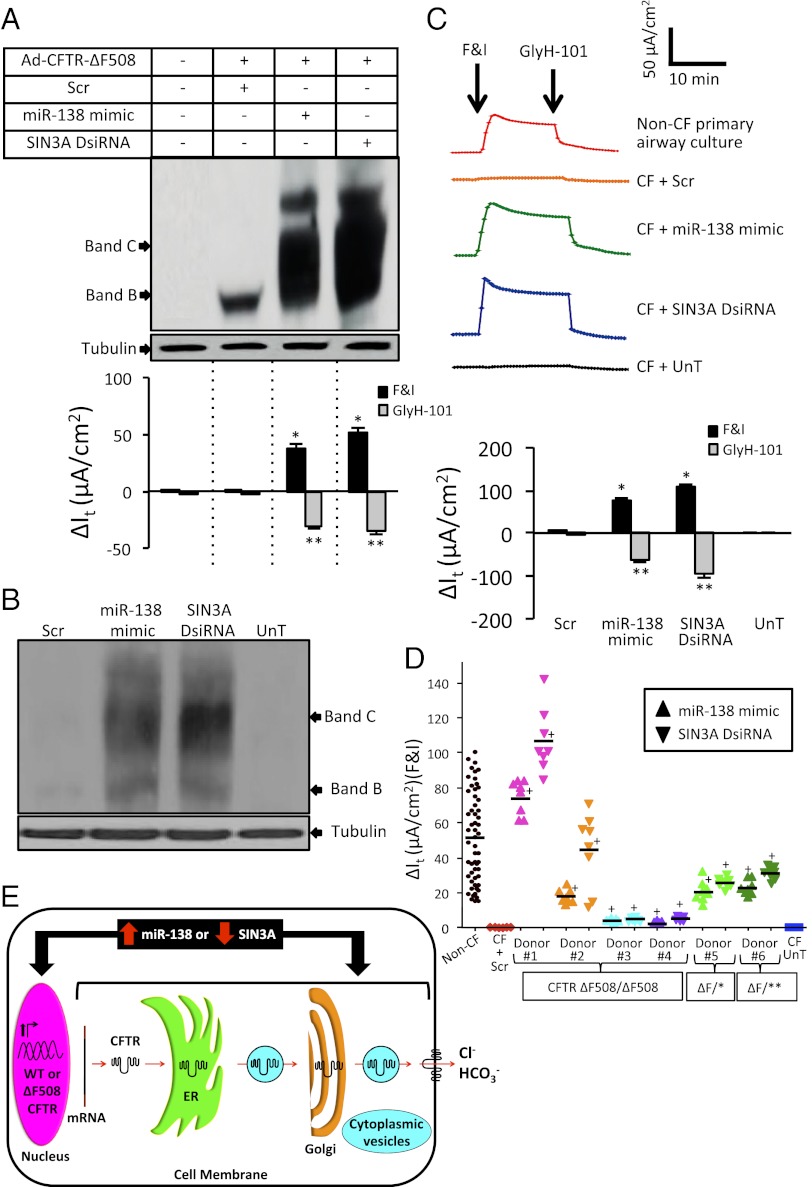Fig. 4.
SIN3A inhibition yields partial rescue of Cl− transport in CF epithelia. (A) (Upper) CFTR protein abundance from airway epithelia (CFTR Q493X/S912X, 24-1 antibody) after indicated treatments. (Lower) Change in It values after F&I stimulation and GyH-101 inhibition (one donor, three replicates). Basal resistance range, 279–360 ohm*cm2. (B) Representative CFTR immunoblot from primary epithelia (CFTR ΔF508/ΔF508) at 72 h posttransfection; R-769 antibody, donor 2 in D. (C) Responses of CFTR ΔF508/ΔF508 epithelia to indicated interventions (donor 1). (Upper) It tracings of responses to F&I, followed by GlyH-101 treatment (epithelia pretreated with amiloride and DIDS). (Lower) Summary of change in It in response to F&I, followed by GlyH-101 treatment (one donor, eight replicates). Basal resistance range, 488–691 ohm*cm2. Error bars indicate mean ± SE. *P < 0.01, **P < 0.01 relative to ΔIt in Scr-transfected samples after F&I and GlyH-101 treatments, respectively; +P < 0.01 relative to Scr. (D) Changes in It values after F&I treatment of six primary CF airway epithelia cultures transfected with indicated reagents. Six untreated or Scr-treated CF samples served as negative controls; eight non-CF samples served as WT controls. ΔF/* denotes ΔF508/3659delC; ΔF/** denotes ΔF508/R1162X. Horizontal bars indicate means. Basal resistance range, 295–819 ohm*cm2. (E) Working model of steps in CFTR transcription and protein biosynthesis pathway in which miR-138–regulated gene products influence WT and CFTR-ΔF508 (Fig. 3C and SI Appendix, Tables S2–S5).

